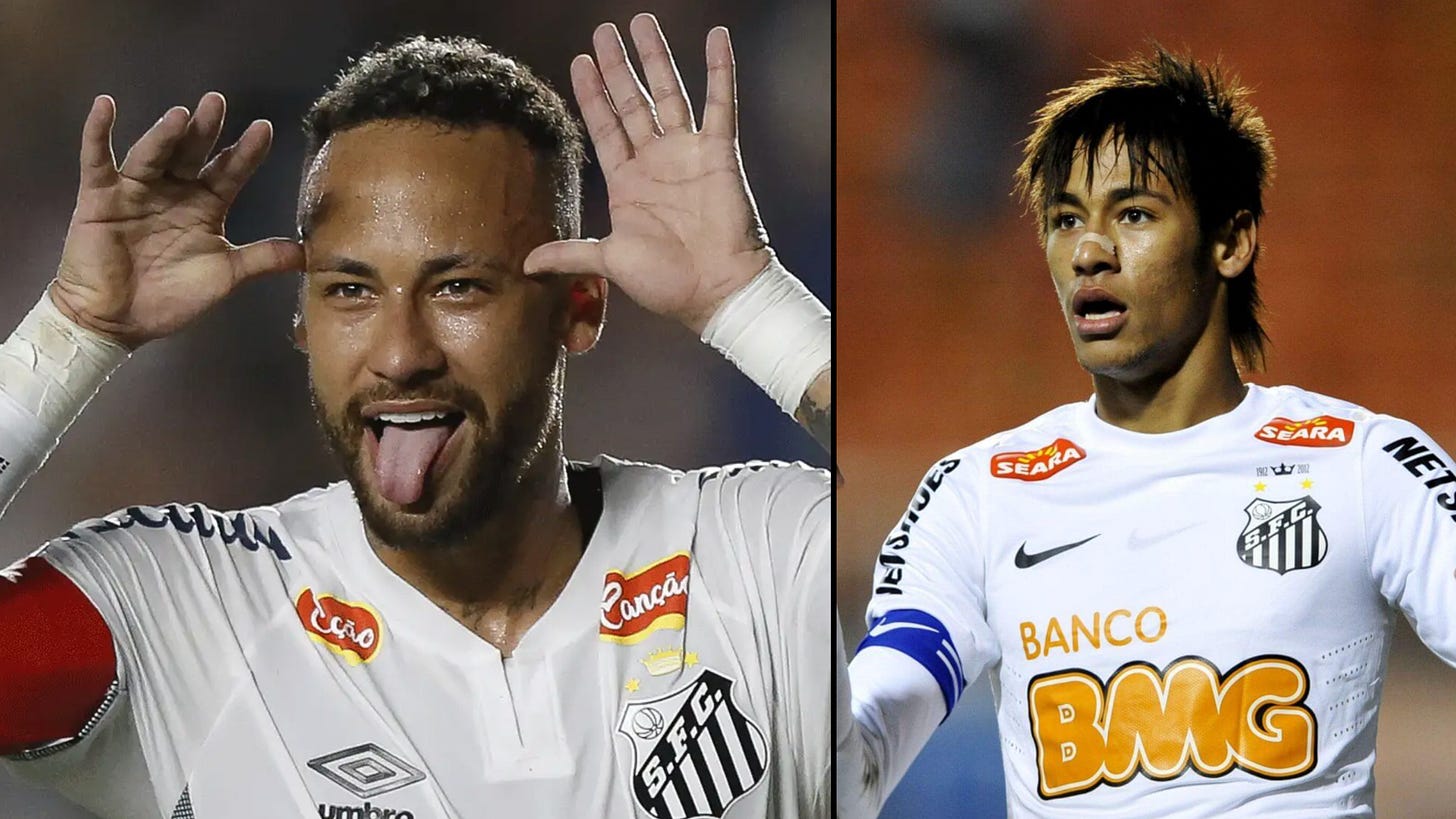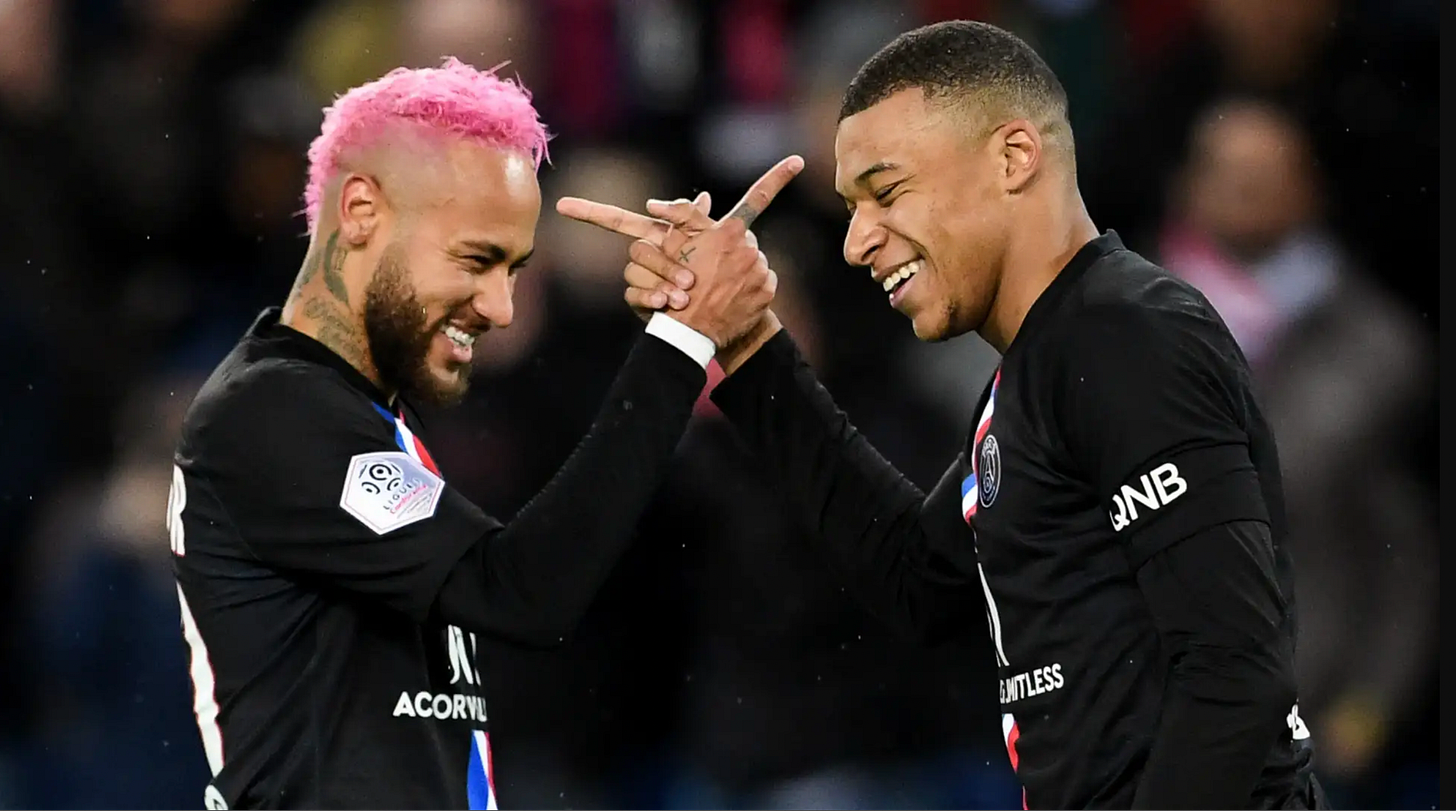Is Neymar Ultimately a Disappointment?
The Brazilian is a treble-winner, a multi-record holder. But could he have been so much more?
You might have noticed some new additions around here, like the Classics series showcasing great moments from the podcast last season. We’re rolling those out all summer, so stay tuned.
But the other big piece of news is that the FEATURES section is going paid:
If you’re signed up — even as a free subscriber — you’ll still get every new post in your inbox, including the new feature stories coming this season. But a week from today, the archive is going behind the paywall.
That includes:
The Cathedrals series on the world’s great stadiums, like Goodison Park, Anfield, and the Stadio Renato Dall’Ara in Bologna.
Interviews with Thierry Henry, Jamie Carragher, Micah Richards, and Clint Dempsey.
On-the-ground reports from some spectacular football scenes.
Be sure to check these stories out before then. Or you can get full access to it all — and support more sharp conversations and original reporting — for the price of a bougie coffee:
And to those of you who are already members of the Weekend: THANK YOU. You make great stories happen.
Now, to Neymar …
It feels like sacrilege. He won the treble with Barcelona and finished top scorer in the Champions League that year. No Brazilian has scored more goals in that competition, the highest-level football there is, and no Brazilian man has scored more goals for his nation — not Ronaldinho, not Kaká, not Rivaldo or Romário. Not even the Ronaldo, R9, The Phenomenon. Not even Pelé.
And yet seeing Neymar Júnior back in that Santos kit again after 12 years, playing for his boyhood club with the occasional flicker of shifty samba magic, I can’t help wondering what might have been — whether ultimately, despite his massive success, his career is a disappointment.
Because when he first pulled on that white and black of Santos and did things at 17 that stopped the whole football world, I really thought he’d end up in the Pantheon. The place where Pelé is, Maradona, Cristiano Ronaldo, and the only South American who’s scored more international goals than Neymar: Lionel Messi.
He was scintillating, the lanky trickster in the all-white #11 kit, dancing down the sideline or powering into the middle of the field, carrying the ball past one, two, three grown-man defenders as a teen. He had the body feints of King Pelé and the precocious creativity, too, lightning pace and preternatural poise and all-conquering swagger. The towering mohawk, the breathing strip stretched across his nose.
He’d face up to a defender, pulling the ball back to put it in his holster and then whooshing it past them and running onto it. He’d pop it around another man, over the shoulder of yet another. He’d rainbow somebody. He’d accept the ball with a defender at his back and lean past him one way while glancing the rock ever so deftly through his opponent’s legs, slipping by him leopard-like to latch onto it and knock it by another man just in time. He’d find the perfect chip to glance it off the inside of the post and in. He’d lay the keeper down with a hesitating half-backlift for a fake shot, inviting them to crumple and capitulate so he could slide by them and take the goal.
And then there was that one against Flamengo in 2011, the Puskas winner for the best goal anywhere in the world that year. It was brilliance verging on the indescribable, showcasing everything about his game that was so joyously lethal, including his outstanding capacity to combine with his teammates multiple times on a single run, taking and giving and taking and giving and scoring. His twinkle-toe touches to evade two defenders on the sideline to start the move, the two more it took to get around the last defender at the top of the box. I still don’t know how that second bit was even possible with his momentum carrying his body so determinedly the other way.
The European suitors inevitably came calling, and for a while he looked like the latest young Brazilian attacker who would make the pilgrimage to Real Madrid. But Los Blancos were gazumped by FC Barcelona in murky circumstances, and it was in Catalunya where Neymar proved he could do the outrageous against the world’s best defenders. He could score big goals in the biggest games on the biggest stage, and win the biggest things.
His triumvirate with Messi and Luis Suárez was among the most formidable attacking forces in football history, and when the Argentine had a long spell on the sidelines with injury in the fall of 2015, Neymar took over, guiding Barça to the top of the league and ensuring the Catalans stayed on pace to secure a second-straight league and cup double. All the while, he danced and shimmied and feinted and shifted his hips, creeping by defenders down the byline with lightning-quick combination touches, beguiling an opponent with a body swerve before picking out a teammate with a cutting through ball or burying a strike in the net with devastating aplomb. He was becoming, in the blaugrana of Barcelona, everything he was meant to be.
And then came the PSG move. At the time, reports were that Neymar wanted to strike out on his own and stake his claim for the Ballon d’Or, which he felt he’d never win while playing in the same team as Lionel Messi. Recently, he disputed that: “I didn’t leave Barcelona because I wanted to become the best player in the world,” he told fellow Brazil legend Romário in January. He said it was “more of a personal decision than a sporting one,” though “of course, the financial side was much better than it was in Barcelona.” He wanted to join up with the sizable Brazilian contingent in Paris and embark on a new adventure.
Whatever he might say now, it certainly lines up that Neymar Jr. would at some point wish to be the main man. But while he still regularly produced the spectacular in Paris, that period is also when the trajectory of his career changed — when his pursuit of personal legacy might ultimately have damaged his legend.
Yes, he won the French league five times, and the star-studded side of which he became the crown jewel stacked up all kinds of domestic cups. But he was signed to power PSG to Champions League glory, and he could never quite deliver. The 2020 final was the closest they came, even with Kylian Mbappé (and eventually Messi) alongside him up front, and those Paris Galácticos got a serious comeuppance when the club switched to a whole new model upon their departure and promptly won the Champions League.
This was also the period where Neymar’s simulation habit came into focus, along with questions about his professional commitment. Some of this was surely rooted in stereotypes about fabulously gifted Brazilians and the party lifestyle — though the evidence suggests Neymar does enjoy a fête — and a lot of it was probably tied up in wider suspicions that the PSG move was mercenary behavior. The Qatari-backed outfit paid a mere €222 million for his services, after all, and that was just the transfer fee. Who knows what kind of wages went along with that down the years?
It was all even more expensive for the Qataris when you factor in the player’s increasingly disastrous injury record. Neymar missed so, so many games for PSG, and for Brazil, too, where he and his contemporaries never quite met the soaring standards of the Seleção.
He missed out on head coach Dunga’s 2010 World Cup squad, but in 2014 it was all set up for him: Ronaldinho and all the previous heroes had faded away, and now Neymar was anointed to lead his country to glory on home soil. It was looking pretty good, too, until they ran into Germany in the semifinal and got battered 7-1 in one of the worst days in Brazilian history. It was like the French getting routed in a cheesemaking competition, and 2018 was little better: rather than the explosive exit of four years prior, they went out with a whimper to Belgium in the quarterfinals.
Then came 2022, and what may ultimately prove to have been Neymar’s last real chance to do it in canary yellow. Another injury in the group stage — this one thanks to some rough treatment from defenders that Pelé might have recognized — kept him out, but he was back in the knockouts as Brazil waltzed through to the quarters once again. There they met Croatia, the hugely experienced major-tournament grafters, and the match drifted to extra time, 0-0.
Then Neymar popped up with a bit of samba sorcery straight out of his Santos days, picking up the ball in midfield and combining with teammates once, twice, scything through the Croatian defense with a darting run as he did it, fleeting through the back line and into the box where he latched onto Lucas Pacquetá’s wall pass, slipped past a defender, and rounded the keeper to score.
It was beautiful and lethal, a goal in all the best traditions of Brazilian football that was worthy of winning any match. And then Croatia equalized, it went to penalties, and Brazil were out.
Instantly, it was easy to forget that Neymar had just passed Pelé with that wondergoal to become Brazil’s all-time leading scorer. Suddenly, it came into focus that he has just over half — 8 to 15 — of R9’s career tally at the World Cup, the tournament for this grand footballing nation.
In fact, when it comes to major tournaments with Brazil, Neymar just does not have much to hang his hat on. There was a Confederations Cup victory in 2013, but he has not even claimed Copa América. When they won it in 2019, he wasn’t there — missing, again, through injury. The closest he came was in 2021, when Brazil were defeated once again on home soil by their great rivals Argentina at the Maracanã. In truth, Neymar’s era for Brazil has been the Argentine era in South America. Chile have enjoyed more success over the last decade and a half.
Neymar’s exploits at Barcelona are not so easily erased. He was the architect of the Remontada, one of the very greatest nights in the club’s history, and he’s got plenty of hardware on the shelf from his time wearing the #11 at the Camp Nou. But the move to PSG was not a step forward at all, much less the legacy-maker he surely must have envisioned. And when he followed that up at age 31 with a disastrous move to Saudi Arabia, where he scarcely played while collecting more massive checks — money that he probably couldn’t spend in multiple lifetimes at this point — it felt like a surrender to all the caricatures, the bored mercenary throwing parties and playing Fortnite.
The move back to his childhood club in January of this year felt like a baptism, a chance to be reborn before his 33rd birthday, but when those clips of him sashaying about in a Santos kit pop up, it only really makes me sad. It may not be easy to tell by this point, but I love Neymar, a man born a few months after me who was one of the first teenage phenomenons I got to witness in real time.
He is still duping defenders and scoring goals, but his movements are stiffer, less languid, less balletically creative because he just does not have the range of motion after the battering his body has taken down the years. There is talk now he could return to Europe, and his compatriot at Juventus, Bremer, is making noise about Turin as a destination. Whether that’s possible now, I do not know. When he was first with Santos, it felt like everything was possible. I am nobody to call Neymar a failure, but perhaps he’s been cursed by the expectations set by his stratospheric early rise. He’s a truly great player, but he could have been one of the players.







Great piece Jack. It's hard to argue the second half of his career was a success, given the highs he hit at Santos and Barcelona. People generally only remember the 'failures' in recent years, and mates of mine, the ones with little interest in football, point to his propensity to throw himself to the ground, but it's really missing the point. One of the most aesthetically pleasing players to watch, and I don't think the rough treatment he recieved from opponents in France helped, but watching him link up with Messi was a genuine joy. I'll always remember the good times.